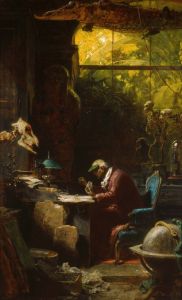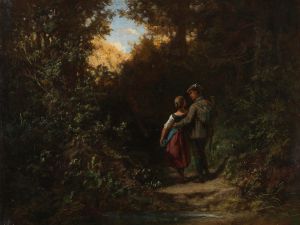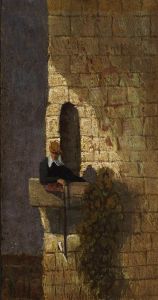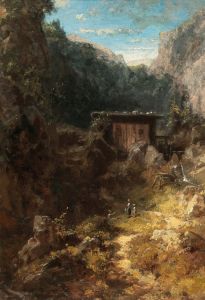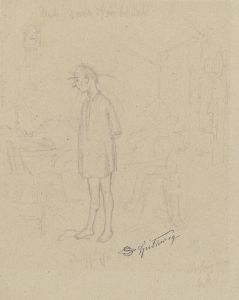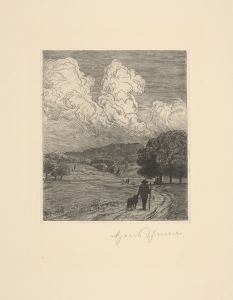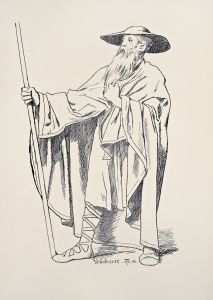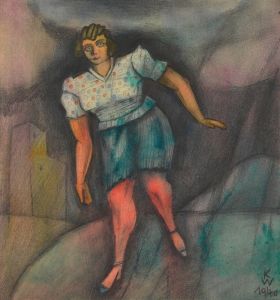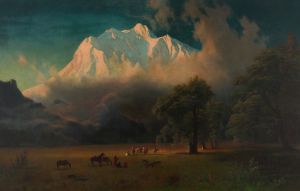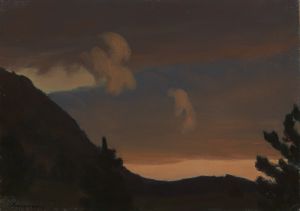
Wanderer in der Gebirgsschlucht bei Gewitter
A hand-painted replica of Carl Spitzweg’s masterpiece Wanderer in der Gebirgsschlucht bei Gewitter, meticulously crafted by professional artists to capture the true essence of the original. Each piece is created with museum-quality canvas and rare mineral pigments, carefully painted by experienced artists with delicate brushstrokes and rich, layered colors to perfectly recreate the texture of the original artwork. Unlike machine-printed reproductions, this hand-painted version brings the painting to life, infused with the artist’s emotions and skill in every stroke. Whether for personal collection or home decoration, it instantly elevates the artistic atmosphere of any space.
Carl Spitzweg's painting Wanderer in der Gebirgsschlucht bei Gewitter (translated as Wanderer in the Mountain Gorge During a Thunderstorm) is a work by the renowned 19th-century German Romantic painter and poet. Spitzweg, known for his detailed and often humorous depictions of everyday life, created numerous works that reflect the Romantic fascination with nature, solitude, and the sublime.
This particular painting depicts a lone figure, a wanderer, navigating a dramatic mountain gorge under the ominous presence of an approaching thunderstorm. The scene captures the tension between human vulnerability and the overwhelming power of nature, a theme commonly explored during the Romantic era. The rugged terrain, darkened skies, and the interplay of light and shadow emphasize the sublime qualities of the natural world, evoking both awe and trepidation.
Spitzweg's use of color and light in this painting is characteristic of his style. The muted tones of the stormy sky contrast with the earthy hues of the rocky landscape, creating a sense of depth and atmosphere. The figure of the wanderer, though small in scale compared to the vastness of the surrounding environment, serves as a focal point, drawing the viewer's attention to the human experience within the grandeur of nature.
Carl Spitzweg (1808–1885) was a self-taught artist who initially trained as a pharmacist before dedicating himself to painting. He was influenced by the Romantic movement, which celebrated individual emotion and the beauty of the natural world. Spitzweg's works often feature solitary figures in contemplative settings, reflecting the Romantic ideal of introspection and connection with nature.
The exact date of creation for Wanderer in der Gebirgsschlucht bei Gewitter is not definitively documented, but it aligns with Spitzweg's broader body of work, which often explored themes of solitude and the sublime in nature. The painting is an example of Spitzweg's ability to combine detailed observation with an emotional resonance that captures the spirit of the Romantic era.
As of now, the painting is part of a private collection, and its exhibition history is not widely documented. Like many of Spitzweg's works, it continues to be appreciated for its artistic merit and its ability to convey the profound relationship between humanity and the natural world.





